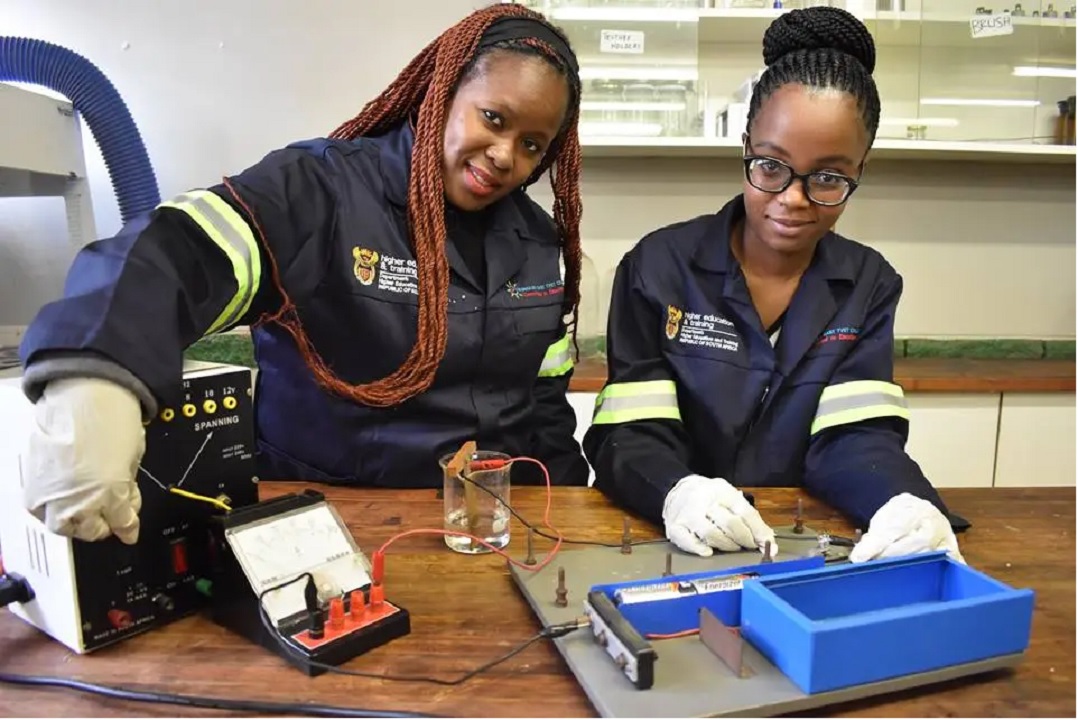What’s next for TVET in Africa amid Covid-19 pandemic
Posted on Thursday, January 20, 2022
Author: Rading Biko
 Tvet students during a practical class session.[File]
Tvet students during a practical class session.[File]
The Covid-19 pandemic has not only created havoc within the financial sector across the globe but it has also redesigned how the education sector will look like from now on.
In Kenya since the pandemic was announced in March 2020 leading to the closure of all learning institutions from Primary to Tertiary level.
A clear sign that it has no respect to anyone or any sector. Technical Training Institutions [TTI] were hit hard by the pandemic.
Despite the discovery of the Covid-19 vaccine, the virus is still proving a big challenge especially in the African continent. The pandemic is challenging the solidity and agility of technical and vocational education and training (TVET) systems. However, the crisis is also giving rise to new practices and effective initiatives that can inspire and strengthen future policies for TVET management and planning in Africa.
How can we take advantage of the pandemic and address the major challenges facing TVET?
Around the world, the sudden break out of the COVID-19 pandemic forced TVET stakeholders to reorganize at extremely short notice. Priority was first given to health issues, learning continuity and maintaining a connection between learners, training centres and companies. Digital technologies have been a key lever for short-term responses, however some underlying challenges, including the lack of equipment and internet connection access in Africa and the practice-oriented nature of TVET, limit the scope for distance learning.
Digitizing TVET and adapting learning environments
Numerous initiatives – whether public or private, local or national – are providing promising responses to the realities and challenges of TVET in Africa, including digital training platforms, free access to e-learning content, practical exercise modules remotely delivered, low-tech and offline solutions. Examples include the e-learning platform Atingi, digital tools developed by the companies Lucas-Nülle and Festo, and the e-learning platform Ejàng initiated by the Senegalese government.
Many of these systems were designed prior to the pandemic, and they proved crucial when schools were closed and physical distancing became the norm. While the COVID-19 crisis has helped to accelerate the adoption of these emerging practices, they will remain essential in the longer term to diversify TVET learning modes, combining in-person and distance learning.
Improving the employability of learners
Some structural weaknesses of TVET systems in Africa have been coming to the fore in the pandemic context. In particular, TVET skills development struggles to respond to the needs of an ever-changing labour market and to tackle youth unemployment in the continent. Yet, this crisis may also provide an opportunity to speed up the transition towards more flexible and effective ways of delivering job-relevant skills.
A number of innovative tools and public and private initiatives to improve the employability of learners have enjoyed renewed visibility and legitimacy in recent months. TVET managers and planners can draw inspiration from best practices such as pooling tools and resources between countries, online mentorship sessions, micro-credential schemes to facilitate skills development and recognition, or a web-based application that uses big data to track and guide learners. Some of the most notable initiatives include the application InserJeunes developed by the Institut de la Francophonie pour l'Éducation et la Formation (IFEF), the online school Openclassrooms and the eCampus Ontario in Canada.
 Students from South Africa at a TVET institute.[File]
Students from South Africa at a TVET institute.[File]
Adapting to new labour market skills needs
Matching the supply of TVET programmes to employer demand for skilled labour force is a major challenge in many African countries. This means designing systems that are flexible and agile enough to allow learners of all ages and backgrounds to acquire the right skills at the right time. On the one hand, labour markets are changing, increasing the need for reskilling. On the other hand, digital upskilling is necessary at the global level, in all economic sectors.
Faced with this twofold concern, IIEP-Dakar has begun efforts to identify innovative practices and initiatives, mainly from the private sector, that facilitate reskilling and lifelong learning. Among these new training providers is the Kenyan company Fundis, which develops digital upskilling content for home repair people working in the informal sector. In a similar vein, the transport company Max, in Nigeria, is helping to improve the digital literacy of taxi and motorcycle taxi drivers, who are increasingly dependent on technology for their work.
Digitize and adapt learning environments
Accelerated by the pandemic context, the diversification of learning modes is both an asset and a challenge for TVET systems. Many promising digital tools are emerging ...
Following the closure of training institutions and social distancing measures, many initiatives have emerged in the TVET sector. The challenge is twofold: to guarantee a certain pedagogical continuity and to maintain a link between the learners, the trainers and the companies. Some countries and actors, most often those with more advanced TVET systems, had already embarked on a diversification of TVET learning before the pandemic, through digital content and solutions.
A transition to mixed modes, making it possible to combine face-to-face and distance learning, indeed has long-term advantages:
It responds to the challenges of lifelong learning , in line with the United Nations Sustainable Development Goal 4 .
It helps to strengthen the resilience of TVET systems to future external shocks.
However, the digitization of skills development comes up against several obstacles. The first stems from the very nature of TVET, whose “practical” dimension complicates the implementation of distance learning. The digital backwardness of the African continent also limits access to high-tech solutions.
IIEP-UNESCO-Dakar has identified several digital tools and initiatives responding to the major challenges of the digitalization of TVET in Africa.
Facilitate access to online training content and programs
In response to the closure of training institutions and the downturn in economic activity, many online training platforms have sprung up, or have seen renewed interest. They are supported by actors from various backgrounds, from both private companies, international organizations and civil society.
"Global Skills Academy”, to help young people develop key skills in the face of the crisis.
Last year UNESCO as part of the Global Coalition for Education, this Global Skills Academy brings together a series of training courses developed by public and private actors. The platform provides free access to programs selected for their quality. Beneficiaries are identified upstream, with the help of the UNEVOC global network.
The goal is to equip one million young people with the digital, entrepreneurial and leadership skills needed to strengthen employability and resilience, in the context of a pandemic.
comments